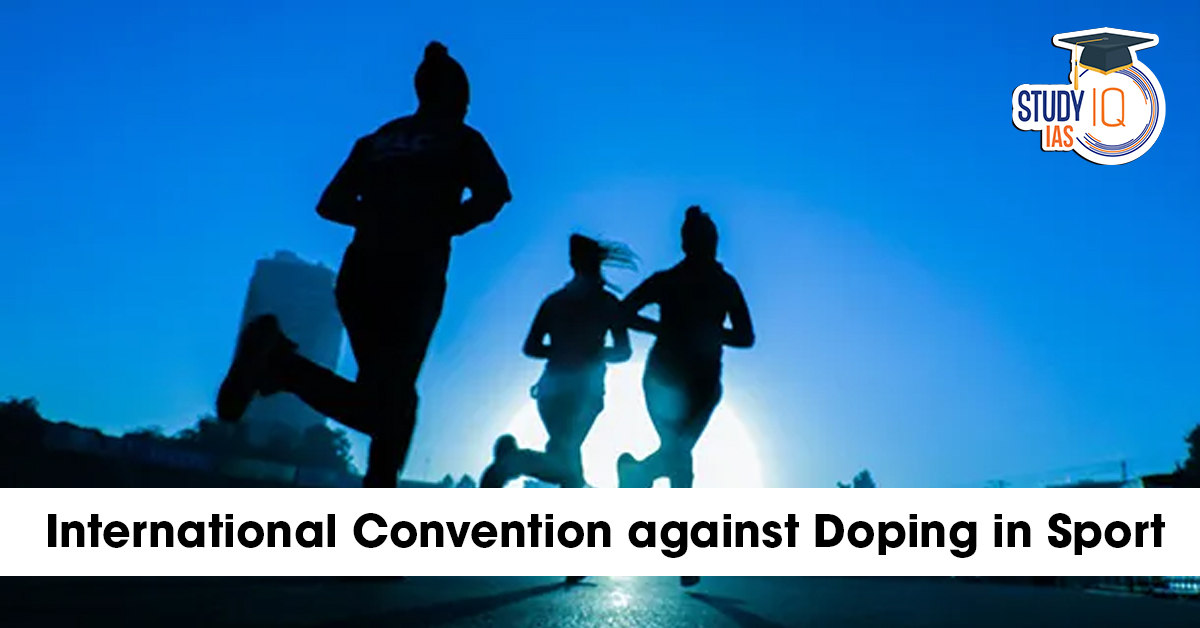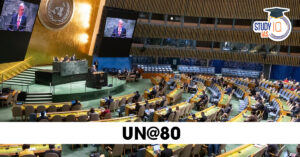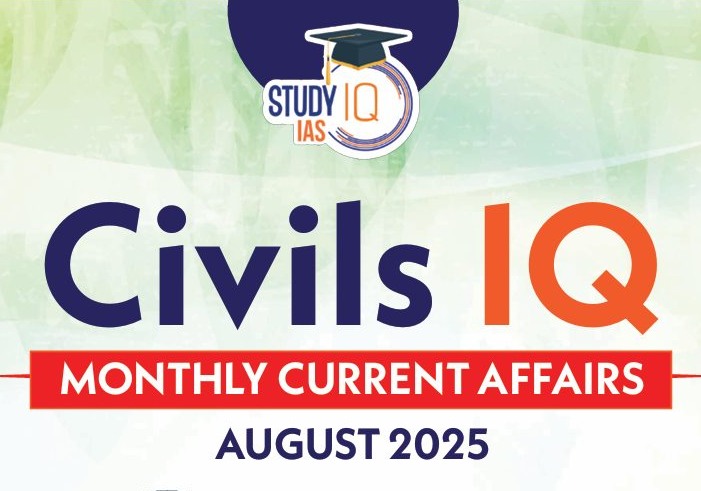Table of Contents
India has been re-elected as the Vice-Chairperson of the Bureau for the Asia-Pacific (Group IV) at the 10th Session of the Conference of Parties (COP10) to the UNESCO International Convention against Doping in Sport, held in Paris, marking the 20th anniversary of the Convention.
This re-election underscores India’s growing leadership in promoting clean, fair, and ethical sports practices globally and reaffirms its commitment to anti-doping efforts through robust policy, testing, and education frameworks.
About the International Convention Against Doping in Sport
What is it?
The UNESCO International Convention against Doping in Sport (2005) is a multilateral treaty that brings together governments across the world to combat doping in sports. Through this Convention, member states commit to adopting national and international measures to prevent and eliminate doping, ensuring fair play, integrity, and health in sports.
-
Adopted on: 19 October 2005, during the 33rd UNESCO General Conference
-
Came into force on: 1 February 2007
-
Current members: 192 States Parties
-
Significance: It is UNESCO’s second most ratified treaty, demonstrating global consensus on the importance of clean sport.
Objectives of the Convention
-
To harmonize anti-doping laws, policies, and standards globally.
-
To ensure a level playing field for athletes worldwide.
-
To protect the health and integrity of athletes by discouraging the use of performance-enhancing substances.
-
To promote education and research on ethical sporting behavior.
-
To strengthen international collaboration between governments, sports organizations, and anti-doping agencies.
Key Features of the Convention
1. Legal Framework Alignment
Member States are required to align their national anti-doping programs with the World Anti-Doping Agency (WADA) Code.
This ensures uniformity in testing, sanctions, and athlete education worldwide.
2. Global Cooperation
The Convention fosters collaboration between governments, sports bodies, and scientific institutions, promoting shared responsibility in fighting doping.
3. Funding Mechanism
An Anti-Doping Fund is established under UNESCO to support:
-
Capacity-building projects
-
Awareness and education programs
-
Research on innovative anti-doping methods
4. Ethical Oversight
It encourages discussion on emerging ethical challenges, such as:
-
Gene doping and genetic modification
-
Traditional pharmacopoeia misuse
-
Advances in biotechnology and synthetic performance enhancers
5. Governance Structure
-
The Conference of Parties (COP) serves as the supreme decision-making body.
-
The Bureau and Approval Committee oversee implementation, financing, and compliance across member states.
-
Regular COP sessions review global progress and set future strategies for clean sport.
Significance of the Convention
-
Global Unity Against Doping:
It brings together 192 countries, uniting governments, athletes, and institutions under one framework for ethical competition. -
Policy Coordination Platform:
Provides a common platform for collaboration between UNESCO, WADA, the International Olympic Committee (IOC), and national anti-doping agencies. -
Safeguarding Athlete Health:
Protects athletes from harmful substances that threaten physical and mental well-being. -
Restoring Trust in Sports:
Strengthens transparency, fairness, and integrity, restoring public confidence in global sports. -
India’s Leadership:
India’s re-election as Vice-Chairperson highlights its proactive stance through initiatives like the National Anti-Doping Agency (NADA) and National Dope Testing Laboratory (NDTL), advancing global anti-doping cooperation.
India’s Role and Achievements
India has emerged as a key advocate for clean sport through national and international initiatives:
-
NADA (National Anti-Doping Agency): Oversees testing, results management, and awareness programs in India.
-
NDTL (National Dope Testing Laboratory): Accredited by WADA, conducting advanced testing for banned substances.
-
Awareness Campaigns: Programs such as Play True and Clean Sports India promote anti-doping education among athletes and coaches.
-
Regional Cooperation: India collaborates with Asian and Pacific nations to build regional capacity for doping control.
India’s re-election at COP10 reinforces its influence in shaping anti-doping policy and ensuring that Asia’s voice remains strong in global sports governance.
Way Forward
As the Convention marks its 20th anniversary, the global sports community faces new challenges:
-
Evolving performance-enhancing technologies
-
Online access to banned substances
-
The need for stronger education among grassroots athletes
To address these, nations must:
-
Strengthen research and data-sharing networks.
-
Enhance digital surveillance and cross-border cooperation.
-
Prioritize preventive education over punitive action.
-
Continue aligning with the World Anti-Doping Code and UNESCO frameworks for consistency.
Conclusion
The International Convention against Doping in Sport stands as a cornerstone of ethical sportsmanship and fair competition. India’s continued leadership as Vice-Chairperson in the Asia-Pacific region reflects its unwavering commitment to promoting integrity in sports.
As the Convention enters its third decade, the focus must remain on education, innovation, and collaboration — ensuring that the spirit of fair play thrives across borders. Upholding these values not only preserves the purity of sport but also inspires future generations to pursue excellence with honesty and honor.


 UN @ 80: A Quarter of a Century Tribute ...
UN @ 80: A Quarter of a Century Tribute ...

 India’s Aviation Vision 2047: Doubling...
India’s Aviation Vision 2047: Doubling...




















